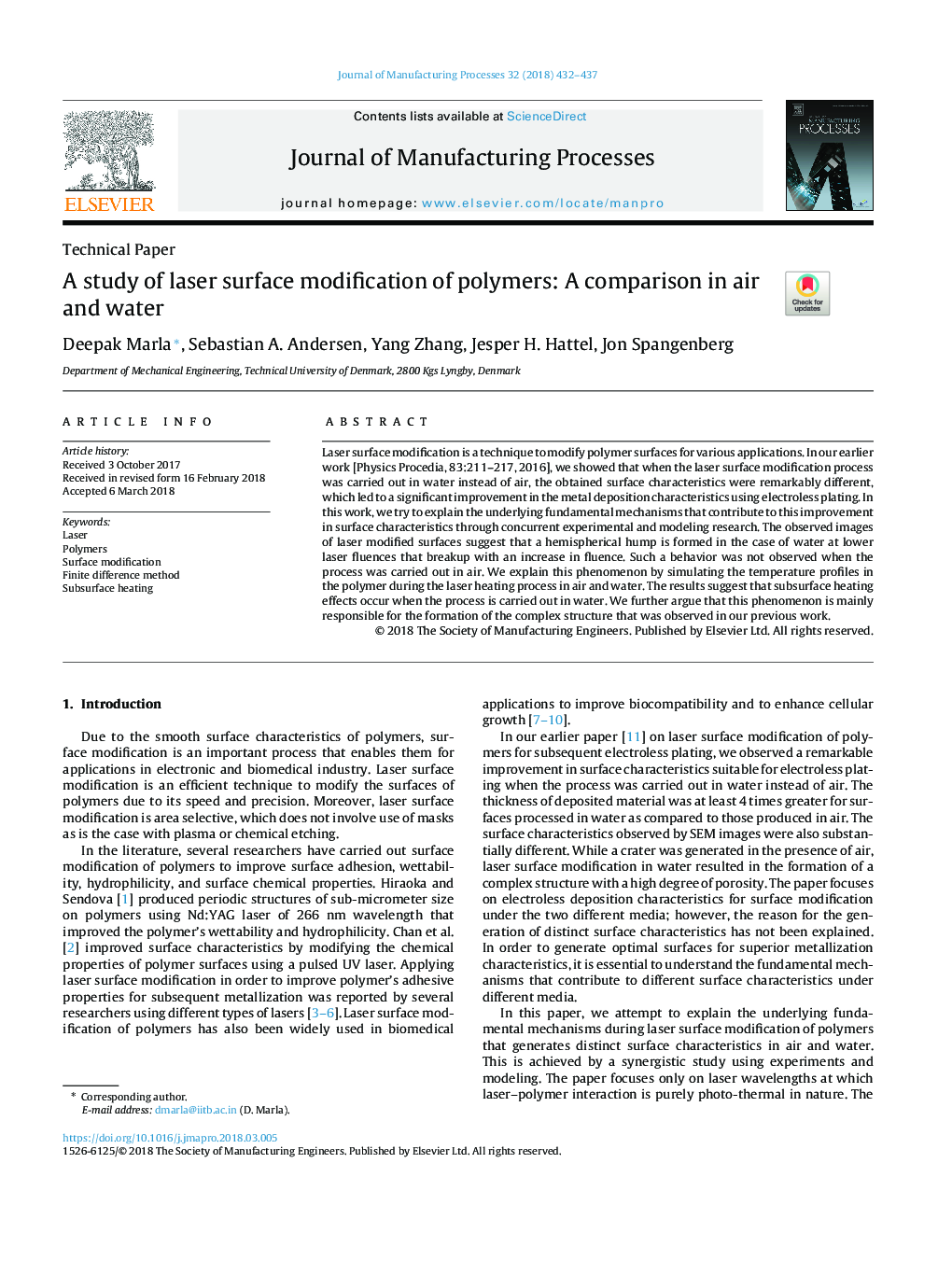| Article ID | Journal | Published Year | Pages | File Type |
|---|---|---|---|---|
| 8048007 | Journal of Manufacturing Processes | 2018 | 6 Pages |
Abstract
Laser surface modification is a technique to modify polymer surfaces for various applications. In our earlier work [Physics Procedia, 83:211-217, 2016], we showed that when the laser surface modification process was carried out in water instead of air, the obtained surface characteristics were remarkably different, which led to a significant improvement in the metal deposition characteristics using electroless plating. In this work, we try to explain the underlying fundamental mechanisms that contribute to this improvement in surface characteristics through concurrent experimental and modeling research. The observed images of laser modified surfaces suggest that a hemispherical hump is formed in the case of water at lower laser fluences that breakup with an increase in fluence. Such a behavior was not observed when the process was carried out in air. We explain this phenomenon by simulating the temperature profiles in the polymer during the laser heating process in air and water. The results suggest that subsurface heating effects occur when the process is carried out in water. We further argue that this phenomenon is mainly responsible for the formation of the complex structure that was observed in our previous work.
Related Topics
Physical Sciences and Engineering
Engineering
Industrial and Manufacturing Engineering
Authors
Deepak Marla, Sebastian A. Andersen, Yang Zhang, Jesper H. Hattel, Jon Spangenberg,
